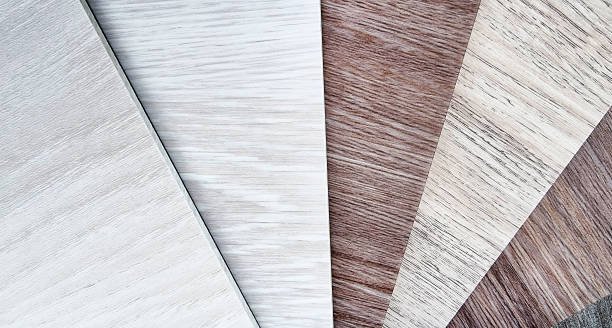What is PVC, and Why is it Essential for Stunning Interior Design?

Polyvinyl chloride, commonly known as P.V.C, has become an increasingly popular material in interior design. From sleek wall panels to durable flooring, PVC’s versatility and affordability are making it a go-to choice for both homeowners and professional designers. But what exactly is P.V.C, and what makes it so suitable for enhancing interior spaces? This article delves into the properties of P.V.C, explores its various applications, and compares it to traditional materials, highlighting its advantages and disadvantages.
Explore More: PVC vs Wood Interiors Bangalore: Which Survives the City’s Climate?
What is PVC?
PVC is a synthetic plastic polymer created through the polymerization of vinyl chloride. It’s one of the most widely produced plastics globally due to its affordability, durability, and versatility. In its raw form, P.V.C is a rigid material, but by adding plasticizers during manufacturing, it can be made flexible and suitable for a vast array of applications. This adaptability is crucial for its widespread use in interior design.
Why is PVC Used in Interior Design?
Kani PVC’s popularity in interior design stems from a combination of factors that address contemporary needs and preferences:
- Cost-Effectiveness: P.V.C is significantly cheaper than many traditional materials like wood, stone, or metal, making it an attractive option for budget-conscious projects.
- Durability: It’s resistant to moisture, rot, corrosion, and insects, making it ideal for areas prone to dampness or wear and tear, like bathrooms and kitchens.
- Versatility: P.V.C can be molded into various shapes, sizes, and textures, allowing for creative and customized designs.
- Low Maintenance: P.V.C requires minimal upkeep. It’s easy to clean and doesn’t require painting, staining, or sealing.
- Lightweight: Its lightweight nature simplifies installation and reduces structural load, making it suitable for various applications, including wall cladding and suspended ceilings.
- Aesthetic Appeal: P.V.C can be manufactured to mimic the look of more expensive materials, such as wood grain or natural stone, providing an upscale appearance at a fraction of the cost.
- Recyclability: While recycling processes are still evolving, P.V.C can be recycled, contributing to environmentally friendly building practices.

PVC vs. Traditional Interior Materials – A Quick Comparison
To better understand PVC’s position in the interior design landscape, let’s compare it to some traditional materials:
Feature PVC Wood Metal MDF/Plywood
Waterproof ✅ Yes ❌ No ✅ Yes ❌ No
Termite-Proof ✅ Yes ❌ No ✅ Yes ❌ No
Fire-Resistant ✅ Yes ❌ No ✅ Yes ❌ No
Cost-Effective ✅ Yes ❌ Expensive ❌ Expensive ✅ Moderate
Applications of PVC in Interior Design
PVC’s adaptability has led to its widespread use in various interior design applications:
- Wall Panels and Cladding: P.V.C panels offer a cost-effective and durable alternative to traditional wall materials, providing insulation, soundproofing, and aesthetic enhancement. They come in various colors, textures, and patterns, including wood grain and stone effects.
- Flooring: P.V.C flooring, including vinyl tiles and planks, is known for its resilience, water resistance, and ease of maintenance. It’s suitable for areas with high foot traffic and moisture exposure.
- Ceilings: P.V.C ceiling panels offer a lightweight and moisture-resistant solution for both suspended and fixed ceilings. They are commonly used in bathrooms, kitchens, and commercial spaces.
- Furniture: P.V.C is used in furniture construction, particularly for outdoor furniture, due to its weather resistance. It can also be used for decorative elements in interior furniture.
- Decorative Trim and Molding: Door frames, skirting boards, and decorative moldings can be made from Polyvinyl chloride, offering a cost-effective and durable alternative to wood.
- Piping and Plumbing: While not always visible, Polyvinyl chloride pipes are a crucial component of interior plumbing systems due to their resistance to corrosion and ease of installation.
In conclusion, PVC’s unique combination of affordability, durability, versatility, and aesthetic appeal has cemented its position as a valuable material in interior design. While concerns about its environmental impact remain, ongoing advancements in recycling and sustainable production practices are paving the way for a more environmentally conscious use of P.V.C in creating beautiful and functional interior spaces. As technology evolves, PVC’s role in shaping the future of interior design is likely to expand even further.

